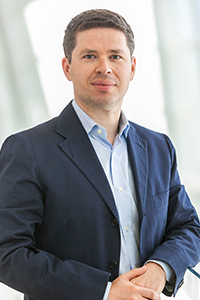C-suite's Dirty Little Fraud Secrets
/LIVE FROM THE 2015 ACFE ASIA-PACIFIC FRAUD CONFERENCE
By Emily Primeaux
Assistant Editor, Fraud Magazine
Day two at the 2015 ACFE Asia-Pacific Fraud Conference in Singapore kicked off with sessions covering the FIFA scandal, compliance in current global markets and investigating in the Cloud. One such session that saw a full room and engaged attendees was C-suite’s Dirty Little Fraud Secrets with Roger Darvall-Stevens, CFE, Partner, National Head of Forensic Services, RSM.
“It’s one of those once-in-a-lifetime events that seems to happen regularly,” said Darvall-Stevens in reference to misconduct in the higher echelons of organizations. He explained that fraud by CEOs, CFOs and others in the “C-suite” is a dirty little secret, which is rarely discussed, but happens with disturbing regularity.
Who are the c-suite or c-level? An organization’s most trusted executives, according to Darvall-Stevens. He then asked the room to break off into groups to discuss what kinds of checks and balances should exist in the c-suite. I sat down with one group as they analyzed the executives in their respective countries.
One attendee expressed the importance of tone at the top. Executives have the power to step outside of the normal processes, but shouldn’t be allowed to. That’s where the checks and balances should come in. He said, “Where we hold our politicians to be accountable, we don’t always do the same with our c-suite.”
Another attendee explained that in the Asian culture, it’s extremely tough to challenge the leaders. This seemed to be the consensus across the room when Darvall-Stevens asked the groups to share their impressions. One attendee shared that in Malaysia the person that raises the issue is the first victim. There’s no protection for whistleblowers.
And the statistics back these claims up. Darvall-Stevens shared results from the 2014 ACFE Report to the Nations on Occupational Fraud and Abuse that showed that in the Asia-Pacific region, the median loss among owners and executives in 2014 was $1.5 million. Globally, the median loss was $500,000.
So what motivates c-suite executives to commit fraud when they are already being paid so well? Darvall-Stevens again broke the room into groups to discuss this. The answers they came up with varied. Another group I sat down with shared an example of an executive who’d promised his family nice trips, expensive gifts, etc. However, on the side, he had a gambling problem. In an effort to cover his gambling debts and still keep his promises to his family, he embezzled from his company.
Other motivations that Darvall-Stevens shared included:
- Living beyond one’s means
- Unusually close relationship with a vendor or customer
- Divorce or family problems
- Excessive pressure from within the organization
What Can Be Done?
Darvall-Stevens finished his session by sharing tips on how to prevent c-suite fraud. Key checks and balances include:
- Developing tailored forensic or fraud detection procedures
- Forensic reviews that include a focus on the c-suite, which can be designed by reverse-engineering the intelligence gained in understanding c-suite fraud red flags
- Conducting forensic due diligence background checks on c-suite executives and family to ensure that any conflict of interest, perceived or actual, is managed
- Performing forensic IT analysis as required
“If a c-suite executive objects to forensics or fraud detection procedures, or a forensic review, I suggest that this may be a red flag in itself and should cause concern for the board,” finished Darvall-Stevens. “No one, regardless of level or seniority in a business, is beyond the checks and balances that mitigate the risks of fraud and corruption.”




